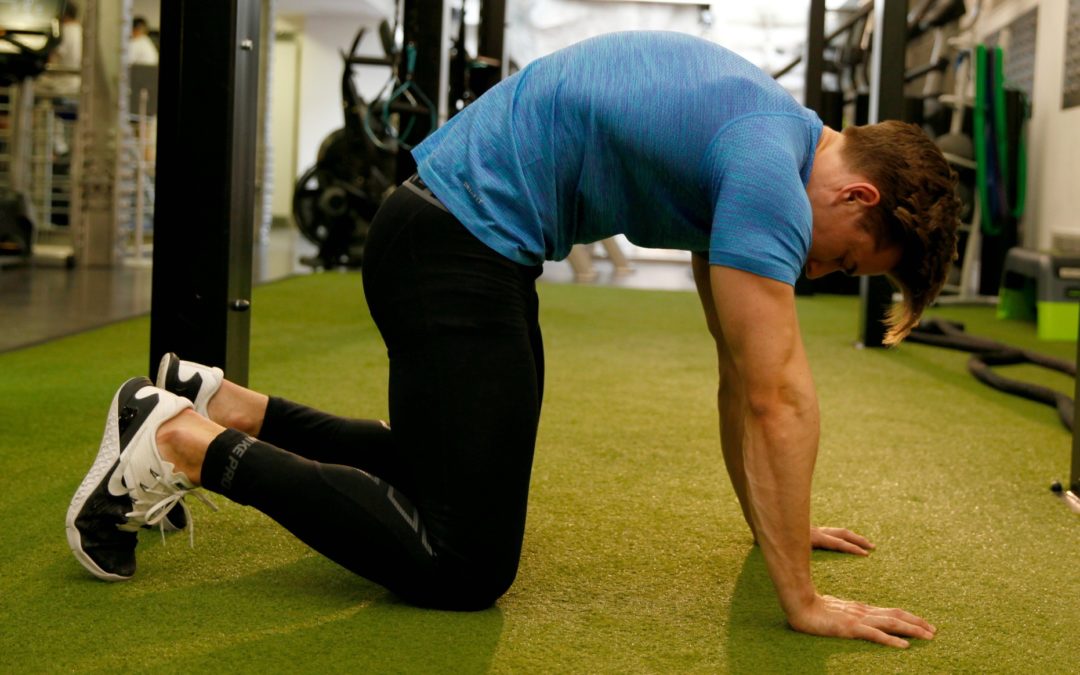From desk-bound office workers to elite athletes, a healthier spine benefits us all in many ways.
Though admittedly, the movement I’m about to show you looks like something only Circ Du Soleil performers or veteran yogis would be capable of!
In actual fact, every human being was born with the movement capacity to do it, and there’s tremendous value in learning and mastering this exercise.
p.s. Don’t think you suck as a human being if you can’t do it straight off the bat. Mastering anything takes practise and you will reap the rewards when you can.
What are we doing?
Actively flexing and extending our spine, one joint at a time.
You might be thinking:
‘What are the differences between this and the regular Cat-Camel?’
Good question – effectiveness is the answer.
With the regular Cat-Camel, the tendency is to move well through some spinal segments and poorly through others. (Our bodies are great at compensating, so this isn’t easy to see or feel)
When performing the Cat, most people extend well at the lumber spine (low back) and poorly at the thoracic spine (mid back).
And, when performing the Camel, flexing the lumbar spine often proves challenging but is often much easier to accomplish at the thoracic region.
When we adapt the Cat-Camel from a ‘global’ movement to one that is ‘sequential’, we are forced to really think about controlling movement between each vertebrae.
It’s vital for spinal health and function that we can flex and extend well through ALL of our joints.
Why are we doing it?
#1 Better Spinal Mobility
When mobility is restricted, some joints become stiff, while others become hyper mobile (in order to compensate). Over time, the uneven distribution of force causes wear and tear which leads to pain and dysfunction.
This can happen locally at various spinal segments but also at neighbouring joints too. For example, when thoracic spine extension is limited, the shoulder blades cannot move efficiently on the rib cage. This leads to excessive movement at the shoulder joint to make up for lost range of motion. And the result? Shoulder dysfunction, which then results in shoulder pain.
Everything is connected, which is why everything needs to work well!
The segmental Cat-Cow is very effective at mobilising the spine and restoring your ability to properly flex and extend across the entire spine.
#2 Improved kinaesthetic awareness
From an exercise standpoint, I cannot over stress the importance of being able to feel the position of your spine in space.
For example, when squatting, you should be able to feel when your low back starts to round. This same principle applies to awareness of your postural tendencies throughout the day, such as being slumped over the phone or a desk.
Body awareness is an extremely important skill that will safeguard you against injury and go a long way to support proper technique/spinal positions in and out of the gym.
#3 Spinal Longevity
Degenerative arthritis is a fast growing epidemic, and a huge part of the cause is simply a lack of movement. Movement nourishes our joints and surrounding soft tissues and keeps them healthy and resilient.
“Use it or Lose it!”
#4 Reduce / Resolve Pain
Modern life often means assuming poor postures for extended periods of time. Such as sitting at a computer; slumped over a phone; standing with the pelvis dumped forward and an overly arched low back. This leads the tissues surrounding the spine to becoming adaptively stiff. Over time, chronic back pain and a host of orthopaedic conditions can result.
There’s a reason the world’s #1 Back Health expert Dr Stuart McGill is a strong advocate of the Cat-Camel exercise!
How do you do it?
- Start on all fours. Your neck should be aligned with your spine with a tucked chin. Your low back should have a slight arch, and your arms should be pressed into the ground so as not to sag between the shoulder blades.
- From here, start by tilting your tailbone towards the ceiling. This will anteriorly tilt the pelvis which starts the ‘Cat’ – extending the spine from the bottom up.
- Next, imagine your spine is being pulled toward the ground and actively arch your back, one segment at a time. (If you have a training partner, it helps to have them walk their fingers up your back. The kinaesthetic feedback will help you to connect with the area you’re trying to actively extend)
- When you reach the mid back, (thoracic spine) extension becomes a bit more challenging. Think about your chest or sternum being pulled toward the ground and contracting the muscles of your back to hinge/arch, one segment at a time.
- When you are in a fully arched position, do not throw your head back into hyperextension…just look up.
- Next, we reverse the motion. Imagine each vertebrae of your spine is attached to strings, like a puppet. Lightly press your arms into the ground and lift your spine one segment at a time until you reach the pelvis. It also helps to think about crunching the abs.
- Tuck your tailbone to finish the ‘Camel’ / fully rounded spine position
- From here, arch your tailbone to tilt the pelvis and continue in this manner for 3-5 full cycles.
Wrapping up
The segmental Cat-Camel can be performed any place or any time. It is an excellent movement to perform first thing after waking up, after a long day at the office or pre-training as part of a warm up.


